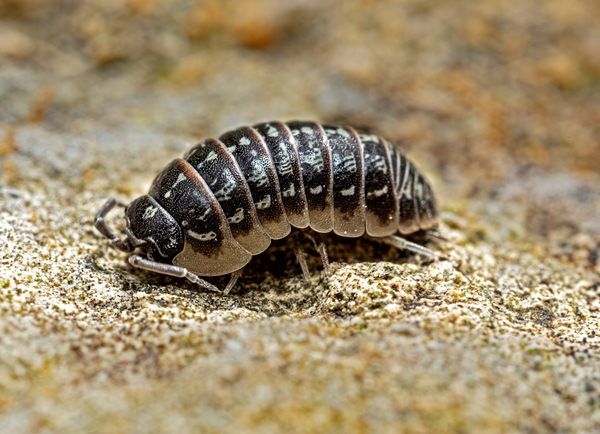Hey there, Spider Buddies! Today, we’re chatting about one of the coolest and quirkiest creatures in the spider kingdom – the curly hair tarantula. Get ready to meet a fuzzy, friendly tarantula that's perfect for both spider newbies and experts alike!
Meet the curly hair tarantula, or Tliltocatl albopilosus, if you want to get technical. From the tropical forests of Central America to your living room, these spiders are sure to make a big impression! With their unique curly hairs and easy-going nature, they're the top pick for many spider lovers.
These fuzzballs are not just a pretty face, either. They're laid back and pretty easy to care for, perfect for spider beginners or pros. You won’t have to worry about unexpected spider surprises (we’re talking bites or aggression), as these guys are generally chilled out and slow-moving.
Setting up a Spider’s Dream Home
To ensure your curly hair tarantula's happiness and longevity, it's essential to create the perfect home that not only provides a safe environment but also allows it to exhibit its natural behaviors. A 5 to 10 gallon tank typically works well as a spacious enclosure for an adult tarantula, granting enough room for roaming and burrowing.
For the bedding, a mix of coconut fiber and peat moss replicates the tarantula's natural habitat best. These materials are perfect for constructing a burrow-friendly environment, allowing your eight-legged friend to dig and create tunnels, promoting both mental health and instinctual behaviors.
Remember to enhance your tarantula's enclosure with additional elements such as a small water dish and secure hiding spots for the ultimate comfort. Regular monitoring of temperature and humidity is also crucial for your spider's well-being. Keep the ambient temperature stable and consistent, between 70 to 85 degrees Fahrenheit, with a humidity level of around 65-70%, achievable through regular misting. With all these elements in place, you'll certainly have a happy and healthy tarantula at home.
Dinnertime!
Feeding your curly hair tarantula can be an easy and straightforward task if you understand the basics of their dietary needs. In their natural habitat, these furry friends are opportunistic hunters, snacking on all sorts of insects. Don't fret though, at home, a diet of crickets, cockroaches, mealworms, and other commercially available feeder insects works perfectly. Offering a variety in their diet does more than just provide nutritional balance, it also keeps their hunting instincts sharp!
The feeding frequency is easy to remember; little ones may need to eat once or twice a week, while adults can patiently wait a bit longer between meals. It's all about taking cues from your tarantula's behavior and physical condition to determine the best feeding schedule. As they grow older, you can adjust the frequency to ensure they stay healthy and sprightly.
Let's talk about meal size! Just like Goldilocks, your tarantula doesn't like its food too big or too small - it should be just right. A practical rule to follow is to avoid offering any prey larger than their abdomen. And remember, cleanliness counts! Make sure you clear out any leftover food after 24 hours to keep their tank tidy and stress-free for your eight-legged buddy.
Handle with Care
Despite their cool, laid-back personality, interacting with your tarantula takes a bit of care and understanding. It's not that they aren't sociable, it's just that they have their own comfort zone, and who can blame them?
Always remember to read your pet's body language before diving in for some handling. Look for those chill vibes and a relaxed posture; that's your green light for some friendly interaction. When it comes to hands-on time, be gentle and sure of yourself. Imagine trying to coax a shy kitten onto your lap - use a steady hand or a soft brush, and avoid any sudden moves that might give your tarantula a start.
Now, you don't want to overdo it. Keep the sessions sweet and short to avoid stressing them out, and always put their safety first. Actually, handling isn't even necessary for a tarantula's happiness - it's more for your own amusement.
Looking Out for Your Tarantula’s Health
It's super important to stay on top of your tarantula’s health so you can catch any sneaky issues early and get them sorted out. Some common health concerns include dehydration, tricky molting situations, and tiny parasitic invaders such as mites .
Dehydration can be a concern especially if they're in a dry environment or during those sizzling hot seasons. Make sure your buddy has access to fresh water all the time and keep the right humidity inside their lovely home. Got a stressed or overly dry tarantula struggling with molting? Offering a moist hideaway or gently spritzing their enclosure can give them a helping hand.
Remember, it's important to keep their home spick and span to avoid uninvited parasitic guests. Regular cleaning, kicking out uneaten food and waste will help you avoid mold and pests. If you think something's off, don't hesitate to reach out to a know-it-all vet experienced with exotic pets. Early action could be a game-changer for your tarantula’s recovery and long-term health.
Life Span
Did you know? The longevity of curly hair tarantulas depends on whether they're boys or girls! The guys, once matured, usually have a lifespan of around 4-7 years. But the ladies are real survivors! After maturing, they continue to flourish and can amazingly live for over 20 years in captivity. Now, that's impressive!
Observing Natural Behaviors - The Best Part!
Having a curly hair tarantula as your pet is like owning a magical ticket to a world of fascinating behaviors and endless entertainment. Isn't it exciting to think about witnessing their natural activities like burrowing and web-spinning right in your living room? By providing them with an environment that tickles their instincts, you not only get to observe them making intricate tunnels and chambers, but also get a front-row seat to their web-spinning adventures. These web-spinning behaviors, especially around their burrows or while they are on their hunting sprees, may not be as frequent as some other species, but they're quite a spectacle and a brilliant testament to their complexity and intelligence.
Forming a Friendship
Sure, our curly hair friends may not be your typical cuddly pets, but who's to say we can't share a special bond with them? Getting to know your pet tarantula's behaviors and providing a safe and consistent home is the first step in building a trustful buddy-buddy relationship. Remember, it's all about respect for their natural instincts and needs.
Did you know that each tarantula is a unique individual, just like us? Observing your pet regularly and understanding its unique personality can take your bond to a whole new level! Plus, you'll be able to provide tailored care, just the way your eight-legged friend likes it.
And hey, you're not alone on this journey! There’s a whole web (pun intended) of tarantula enthusiasts online who are ready to share insights and tips. Engaging with these like-minded folks can help you grow into a super spider keeper and make your bond with your tarantula even stronger. There's a real sense of community waiting for you, where sharing love for our beautiful, hairy friends creates an amazing camaraderie.
Beyond the Basics
Ready to take your hobby to the next level? Advanced tarantula keeping is an exciting and rewarding journey where you get to delve deep into the world of these fascinating creatures. This isn't just about feeding and cleaning - it's about understanding their complex behaviors, breeding specifics, and even participating in their conservation!
Dive into the intricate details of tarantula reproduction - a whole universe that requires a solid understanding of their life cycles, behaviors, and habitat needs. When you're preparing for the miracle of little tarantula babies, you need careful planning, sharp monitoring skills, and heaps of preparation. But don't worry, you're not alone on this journey. Connecting with seasoned breeders can offer you priceless tips and guidance.
But there’s more! Tarantula conservation is an amazing way to step up your game. Get involved in citizen science projects, lend a hand in preserving their natural habitats and take a stand in educating others about the importance of tarantula conservation. Every little effort you make can ripple into a big impact, promoting protection and love for tarantulas and their beautiful homes.
Conclusion
Whether you’re already a spider expert, or you're just getting into the world of tarantulas, the curly hair tarantula makes a wonderful, unusual, and rewarding pet. Connect with fellow enthusiasts and get ready for an incredible adventure. Happy spider keeping!




